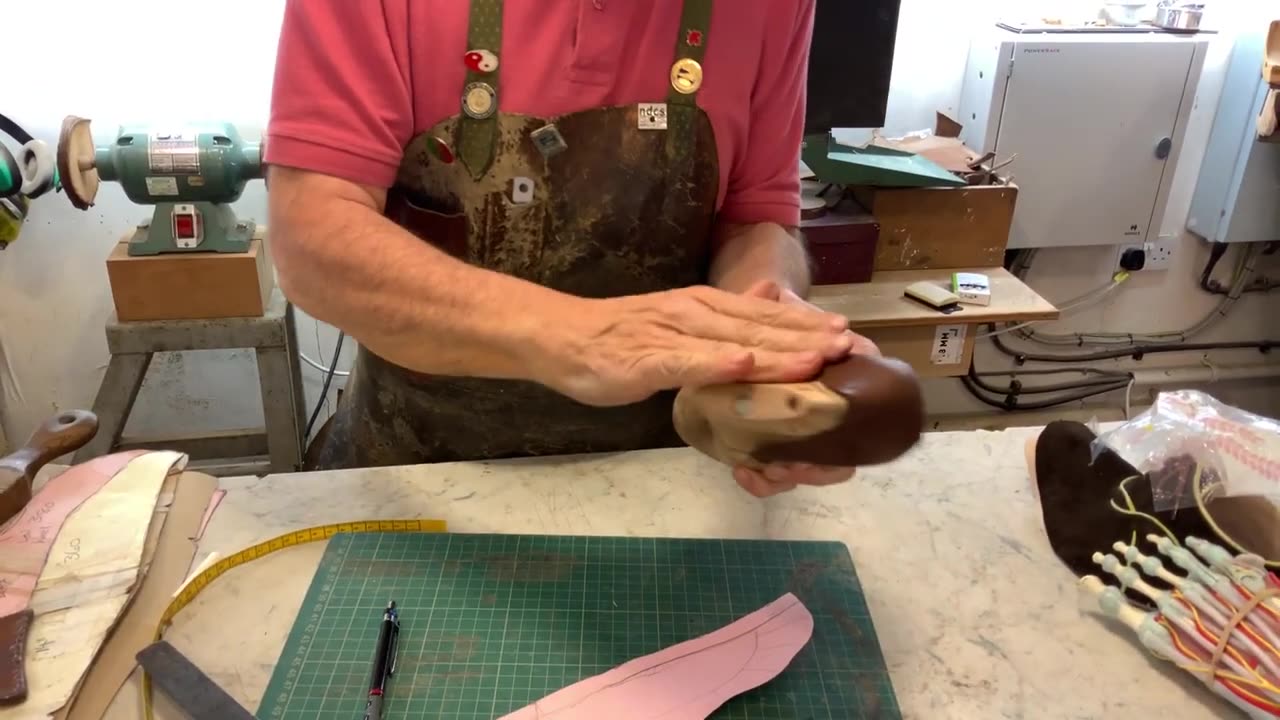Premium Only Content

25 How to make Stiffener Patterns - Part 3 of 3
Creating stiffener patterns involves a process that is often specific to the material you are using, the type of stiffener required, and the intended application. Below is a general guide that you can adapt based on your specific needs and materials:
### Materials Needed:
- **Paper or Cardboard:** For creating the pattern.
- **Measuring Tools:** Ruler, measuring tape, or any other suitable measuring instrument.
- **Pen or Pencil:** For marking and drawing.
### Steps:
1. **Understand the Purpose:**
- Determine the purpose of the stiffener (e.g., for a garment, accessory, or structural application).
2. **Material Selection:**
- Identify the material for the stiffener (e.g., interfacing, plastic, metal, etc.).
3. **Measurements:**
- Take precise measurements of the area where the stiffener will be applied.
- Consider the desired shape and size of the stiffener.
4. **Drafting the Pattern:**
- Using your measurements, sketch the pattern on paper or cardboard.
- Ensure accuracy and symmetry in your design.
5. **Add Seam Allowance:**
- If applicable, add seam allowances to your pattern to accommodate stitching or joining with other pieces.
6. **Labeling:**
- Clearly label your pattern with any necessary information, such as the type of stiffener, size, and any directional instructions.
7. **Cutting:**
- Carefully cut out the pattern along the outlined edges.
8. **Testing:**
- If possible, create a prototype using inexpensive materials to test the fit and effectiveness of your stiffener.
9. **Refinement:**
- Make any necessary adjustments to the pattern based on the testing results.
10. **Finalization:**
- Once satisfied with the prototype, transfer the final pattern to your chosen stiffening material.
- Cut out the stiffener following the pattern.
11. **Application:**
- Apply the stiffener according to your project's instructions, whether it involves sewing, adhesive, or other attachment methods.
12. **Documentation:**
- Document your stiffener pattern for future reference. Include details such as materials used, dimensions, and any specific application instructions.
Always consider the specific requirements of your project and materials when creating stiffener patterns. This guide provides a general outline, but the details may vary depending on the context of your application.
-
 3:29:42
3:29:42
BrookieMonster
5 hours ago $13.51 earnedChristmas Stream: Marvel Rivals with CallmeSeags 🎄
52.4K6 -
 LIVE
LIVE
TheSaf3Hav3n
3 days ago| RUMBLES FIRST SUBATHON IS HERE!!! | DAY 4 |
2,290 watching -
 3:14:33
3:14:33
Joe Donuts Gaming
7 hours ago🟢 Live : Christmas is Here!! | Fortnite, Caroling, Light Tours and Donos !!
31.7K10 -

CLUJ
6 hours agoCHRISTMAS EVENING HYPE!! LETS HAVE FUN GAMING!!
29.9K6 -
![I AM FINALLY BACK :: PUBG: BATTLEGROUNDS :: RUMBLE NOW HAS GIFTED SUBS!!! [Merry Christmas] {18+}](https://1a-1791.com/video/fwe1/22/s8/1/e/f/C/6/efC6v.0kob-small-I-AM-FINALLY-BACK-PUBG-BATT.jpg) LIVE
LIVE
a12cat34dog
8 hours agoI AM FINALLY BACK :: PUBG: BATTLEGROUNDS :: RUMBLE NOW HAS GIFTED SUBS!!! [Merry Christmas] {18+}
128 watching -
 3:55:42
3:55:42
STARM1X16
8 hours agoMerry Christmas Fortnite
56.6K6 -
 2:45:33
2:45:33
Sgtfinesse
8 hours agoMerry Christmas Night
51.1K16 -
 3:51:18
3:51:18
tacetmort3m
1 day ago🔴 LIVE - (MERRY CHRISTMAS) TIME TO SPREAD DEMOCRACY - HELLDIVERS 2 OMENS OF TYRANNY
27.4K2 -
 12:42
12:42
Cooking with Gruel
22 hours agoBrown Butter Trifle with Salted Caramel and Cinnamon Apple
21.6K3 -
 2:46
2:46
BIG NEM
11 hours agoDiscovering RAKIJA: The Holy Liquer of the Balkans
18.4K2